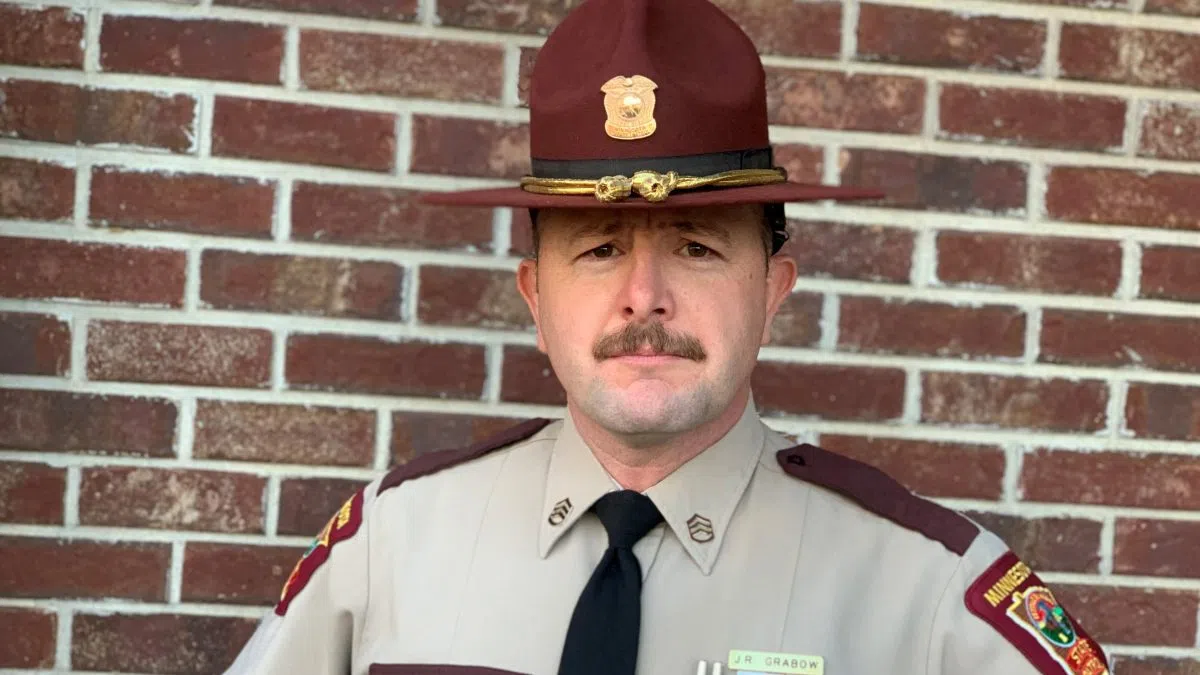Minnesota
Minnesota lawmakers assert protections for public waters

A new state law expands legal protections for hundreds of miles of Minnesota waterways whose status had been uncertain.
In the final days of the session, lawmakers passed language clarifying that a waterway that meets the legal definition is a public water, even if it’s not on a decades-old state inventory.
The change was included in an omnibus environment and natural resources budget bill, which Gov. Tim Walz signed into law last week.
“This is a backstop to say water courses that meet the definition in state law are water courses that belong to all of us as Minnesotans, and are due these protections that we’ve outlined for public waters,” said Carly Griffith, water program director for the Minnesota Center for Environmental Advocacy.
MPR News is your trusted resource for the news you need. With your support, MPR News brings accessible, courageous journalism and authentic conversation to everyone – free of paywalls and barriers. Your gift makes a difference.
The bill’s passage followed a lengthy legal dispute over Limbo Creek, the last free-flowing stream in heavily-farmed Renville County.
The county board did not require an environmental review of proposed improvements to the upper reaches of the creek, because it wasn’t listed on the public waters inventory.
Environmental groups and the Department of Natural Resources argued the stream met the legal definition of a public water, warranting greater protection. A lower court agreed, and the Minnesota Supreme Court upheld that decision in 2022.
In Minnesota, “where water is really central to our identity,” the state has taken an expansive view of what counts as a public water, Griffith said. That definition includes natural and altered waterways with a total drainage area greater than 2 square miles. “So that means it can include streams and creeks that aren’t the Mighty Mississippi River, but that are important to the local communities that rely on them,” Griffith said. She estimates the new law will affect at least 640 miles of waterways across the state.
Griffith said there are errors in the state’s public waters inventory, which was created in the 1980s when the technology used to identify drainage areas was less advanced. The new law includes $8 million over the next eight years for the DNR to update the inventory.
Some farm groups are concerned the new law could expand legal protections to more waterways and create uncertainty for farmers. Public waters have more regulations, including restrictions on draining and filling, and requirements to maintain vegetative buffers.
Pierce Bennett, public policy director for the Minnesota Farm Bureau Federation, called it “a pretty dramatic expansion” of what could be labeled public waters, leaving farmers “in a little bit of limbo.”
“Our view is that this would allow for a lot of waters that aren’t currently under that inventory to just simply be put in,” Bennett said. “And that is concerning.” He said farmers shared their concerns about the bill with legislators throughout the session, and plan to work with state regulators to understand its impacts.
“We need to have a greater understanding of what this might mean for the future,” Bennett said.

Minnesota
“ASK A TROOPER” by Sgt. Jesse Grabow of the Minnesota State Patrol for June 17th

“ASK A TROOPER” by Sgt. Jesse Grabow of the Minnesota State Patrol
Question: I am a truck driver and I see a lot of people making some poor choices around us big rigs out here. Do you guys still talk about the “no zone?” If not, please do and thank you.
Answer: Thank you for the email and yes, we do and I will help get the word out. If you are following a commercial vehicle, stay out of its “no zones.” These zones are blind spots to the front, sides, and rear of the vehicle. Some truck drivers may not be able to see up to 20 feet in front of the cab, on either side of the trailer, and up to 200 feet to the rear.
Trucks and buses have operating restrictions, and sometimes use technology like speed limiters. Honking, driving aggressively, or weaving through traffic won’t make the trip faster, but can cause dangerous distractions and crashes. A little bit of patience and courtesy can go a long way and help keep everyone safe.
A portion of state statutes were used with permission from the Office of the Revisor of Statutes. If you have any questions concerning traffic related laws or issues in Minnesota, send your questions to Trp. Jesse Grabow – Minnesota State Patrol at 1000 Highway 10 West, Detroit Lakes, MN 56501-2205. (You can follow him on Twitter @MSPPIO_NW or reach him at, jesse.grabow@state.mn.us).
Minnesota
Three-star OL Daniel Shipp commits to Minnesota

The Minnesota Golden Gophers’ “Summer Splash” continued into this weekend, with offensive lineman Daniel Shipp becoming the first of five recruits to grab an oar.
Get to know Daniel Shipp
Height: 6’6”
Weight: 275
Power 5 Scholarship Offers: None
247 Sports Composite Rating: N/A
Scouting Report
Shipp missed all of last season due to a knee injury, which is at least part of the reason Minnesota is his only Power 5 as of this writing. There is no denying that he has the right frame, length, and athleticism. Shipp is also light on his feet and can change direction quickly. But he’ll need to stay healthy this fall and prove that he is more than a set of physical tools.
Hudl Highlights (Link)
Minnesota
Wiley named to University of Minnesota Duluth's dean's list

The University of Minnesota Duluth announced that junior Emma Wiley, Millarton, N.D., has been named to the dean’s list for the spring semester.
Students on the dean’s list have achieved a grade-point average of 3.50 or higher while earning a minimum of 12 letter-graded credits.
Wiley attends the University of Minnesota Duluth’s College of Arts, Humanities, and Social Sciences and majors in human and social science and theater.
-

 News1 week ago
News1 week agoRead Justice Clarence Thomas’s Financial Disclosures for 2023
-

 Politics1 week ago
Politics1 week agoNewson, Dem leaders try to negotiate Prop 47 reform off California ballots, as GOP wants to let voters decide
-

 World1 week ago
World1 week ago‘Bloody policies’: Bodies of 11 refugees and migrants recovered off Libya
-

 Politics1 week ago
Politics1 week agoGun group vows to 'defend' Trump's concealed carry license after conviction
-

 Politics1 week ago
Politics1 week agoShould Trump have confidence in his lawyers? Legal experts weigh in
-

 Politics6 days ago
Politics6 days agoGOP releases Jan. 6 clip of Pelosi saying 'I take responsibility' as she discussed National Guard absence
-

 Movie Reviews1 week ago
Movie Reviews1 week ago‘Darkest Miriam’ Review: Britt Lower in a Marvel of a Drama About a Young Librarian’s Loves and Fears
-

 World1 week ago
World1 week agoOrban party loses major support in Hungary's EU election















